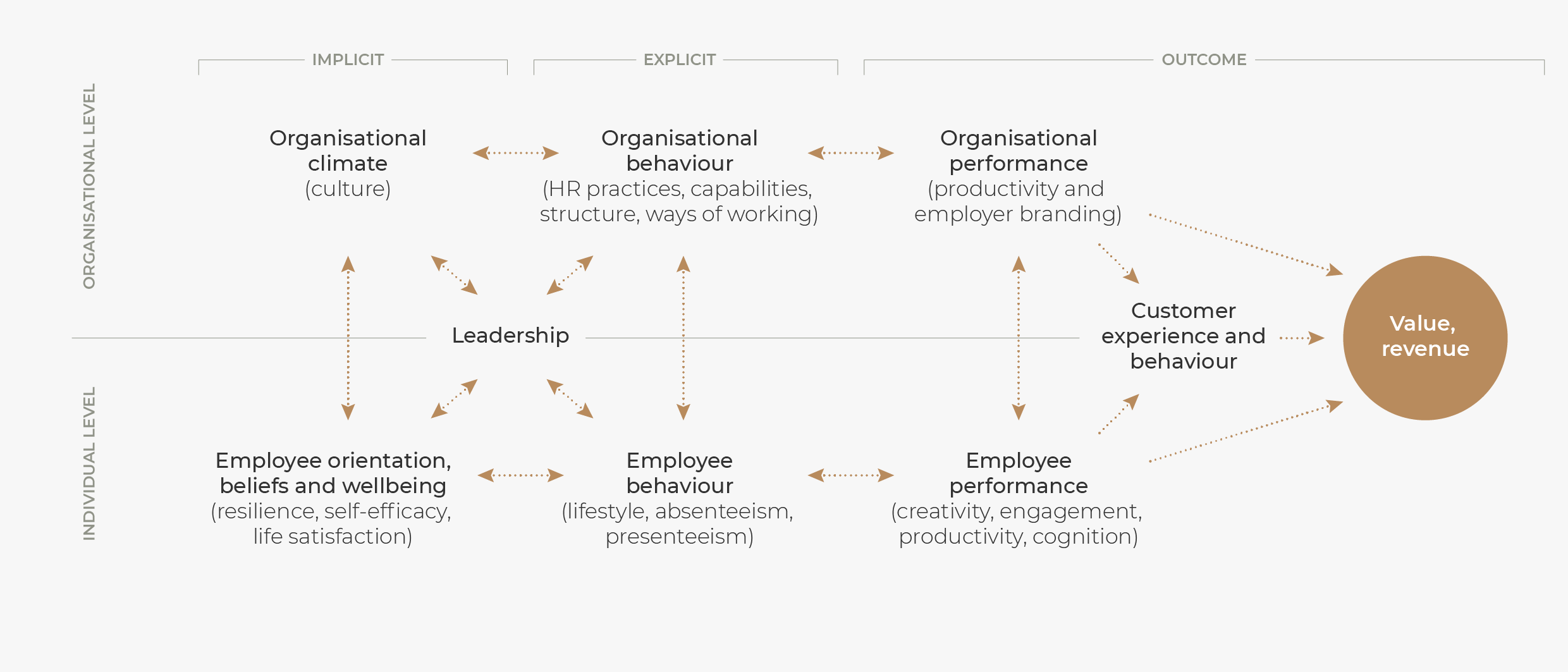Why the Future of Work Looks Clear and Positive

The traditional concept of ‘work-life balance’ includes the thought of work and ‘real life’ being so far separated from one another that work is something negative. This kind of thinking is based on the traditional idea of work as physical performance, but most modern work is information-intensive work that can be very rewarding and increase psychological wellbeing.
Analysis on the future of work has included many threatening possibilities, and many people are worried about the shrinking number of available jobs. Researchers have estimated that approximately a third of all jobs will disappear, as artificial intelligence and robotics will carry out a portion of the tasks. Furthermore, even if certain jobs remain, experts note that work will become more challenging and that the change will demand constant learning.
On the other hand, the World Economic Forum’s most recent research has suggested that more jobs will be created than lost in the near future. The new jobs of the future will emphasise creativity, complex thinking, social skills and the utilisation of technology. Many feel that such challenges offer opportunities, but every third worker is worried and stressed. Fear and concerns about the future can also deteriorate one’s commitment to their employer.
A clearer, more positive future work vision
A clear and positive vision of the future usually makes it easier to manage stress and uncertainty. Still, the current estimates and visions regarding the future of work have been coloured more by threats and mounting demands. Aalto University has established the Future of Work programme to research future working life and the positive opportunities that it may offer. Hintsa is participating in the programme’s Exponential project which researches the elements and leadership models of future work in 50 companies. The aim is to create a clearer, more positive future work vision that offers people the chance to evaluate their strengths and to acquire skills that are necessary for the future.
A creative and efficient organisation will also give rise to positive customer experiences and economic profitability
According to the researchers working on the Exponential project, organisations whose leadership is based on supporting a positive organisational culture and the wellbeing of employees will be the most successful. The Organisational Value Chain below illustrates that these resources support the innovative activity of employees and the procedures that direct such activities.

A positive cycle for creating a positive vision
Instead of feeling threatening, future work can be seen as a positive opportunity to increase the feeling that work is meaningful, challenging and fosters a sense of community. Moreover, workers may feel that they can be more self-directed in the future, as technology will take care of routine work, leaving people more time and resources for human interaction.
Future work can be seen as a positive opportunity to increase the feeling that work is meaningful, challenging and fosters a sense of community.
Human resources will become more significant in future work, and having more of them will result in an increased sense of community as well as better competence and autonomy, which will lead to more opportunities to develop work motivation. Hundreds of studies have indicated that these factors explain most of our daily positive emotions and our long-term wellbeing.
Positive emotions, energy and excitement are the fuel for creative and innovative work
The Exponential project’s research studies employee commitment as well as the impact that positive attitudes and emotions have on creating resources and a positive atmosphere within organisations. Previous research has demonstrated that employees tend to adopt attitudes and values from their leaders and that they also have a tendency to feel similar emotions as their leaders in daily work.
This crossover is a process in which a leader’s psychological experience affects an employee’s experience in face-to-face interaction. The emotions may be transferred consciously or unconsciously through empathy. Emotions also affect a person’s social behaviour, which can then have a positive or negative effect on the emotions and wellbeing of those close to the person.
Most research so far has focused on studying the transference of negative emotions such as stress and irritation from the workplace to family members, but there has been relatively little research on how positive emotions may spread in a work organisation. Positive emotions, energy and excitement are resources for creative and innovative work, and creating them will be even more important in future work.
Leadership for future work
Leadership has been researched for decades, and there are several theories about different leadership models. A common feature of all models is that leadership is seen as a means of achieving desired goals. However, different types of organisations may implement different methods to achieve good leadership.
In recent years, a growing number of organisations have become interested in self-direction and shared leadership. Organisations that work in a global and/or fast-paced environment have particularly begun to pursue innovation by encouraging team members to take more responsibility for their own activities. This self-directing leadership can be considered an alternative to the traditional model of hierarchical leadership that the majority of modern organisations still use. Small start-up and growth enterprises have been trailblazers in this area, but a growing number of large companies are moving to self-directing teams and shared leadership, particularly in tasks that require innovativeness.
Wellbeing at work and how to lead it
Another area of leadership that has been emphasised in the 2010s is wellbeing at work and reducing the costly consequences of lacking wellbeing, including burn-out, sick leave and early retirement. The wellbeing of employees also has a direct connection to profitability, creativity and learning. The strategic management of wellbeing at work refers to making wellbeing at work part of an organisation’s strategy, vision, values and operations.
The wellbeing of leaders is also reflected in the wellbeing of the teams they lead
The form that an organisation’s strategy and vision take will largely be defined by the personal values that leaders have regarding wellbeing. Furthermore, these values will dictate how successfully an organisation’s strategy will be implemented. As we stated earlier, the wellbeing of leaders is also reflected in the wellbeing of the teams they lead. Besides leaders, work communities play an important role in developing wellbeing at work. The positive efforts of all employees create the atmosphere and practices of a community that supports wellbeing and learning.
Research as a part of creating the vision for future work
In order to make wellbeing at work and enriching organisational leadership part of the vision for a positive future, modern organisations must recognise what these concepts mean in their organisations. What kind of organisational and leadership culture do they currently have and what are its impacts?
The organisations participating in the Exponential research project will get a comprehensive overview of their culture, leadership, performance and wellbeing at work. Furthermore, each person participating in the study will receive a report detailing their personal results. They will also receive instructions on how to interpret the results and how to improve their situation. The results will be reported to the organisations as a summary of all respondents’ results.
Workshops will be organised for management teams, so that they can interpret the results and plan development procedures. The organisations will also be offered the opportunity to compare the results of different departments, functions or geographical branches. Moreover, supervisors have the chance to receive results regarding their own leadership style and its effects on their team’s atmosphere and wellbeing.
We’ll be sharing more information about the exciting Exponential project soon – make sure to subscribe to our Hintsa Newsletter to stay up to date. This article was first published in Työn Tuuli magazine.
We can help your organisation succeed in the future of work. Leave your contact details below and we’ll be in touch as soon as possible.


